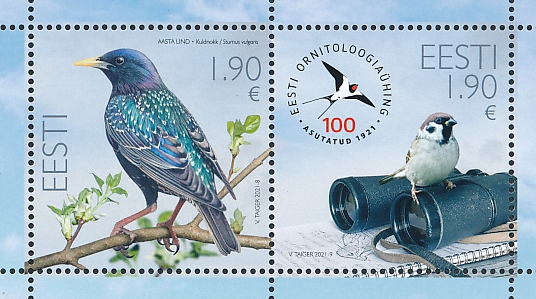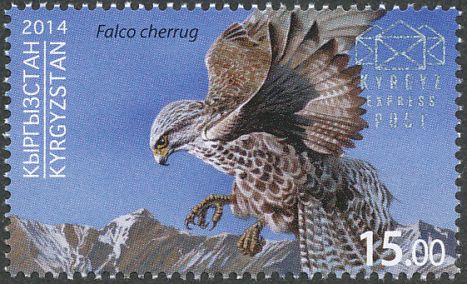Written by Steven Ardron
Introduction
On 29 April 2021, Eesti Post commemorated 100th anniversary of the Estonian Ornithological Society. According to the information on the Eesti Post Website.
“The Estonian Ornithological Society was established on 1 May 1921. For over one hundred years, the society has contributed to the research, protection and introduction of our bird species. With more than 600 members, the ornithological society is currently one of the largest nature protection societies in Estonia and it is also a partner of the international bird protection organisation BirdLife International. We continue to stand for the wellbeing of Estonian wild birds.”
The stamp issue includes a sheetlet of two colourful stamps, both at €1.90 (the letter rate for postage outside of Europe, up to 250g), with the left-hand stamp featuring the Starling (Sturnus vulgaris) and the right-hand stamp illustrating a pair of binoculars and the logo of the Ornithological society, plus a Tree Sparrow (Passer montanus).





